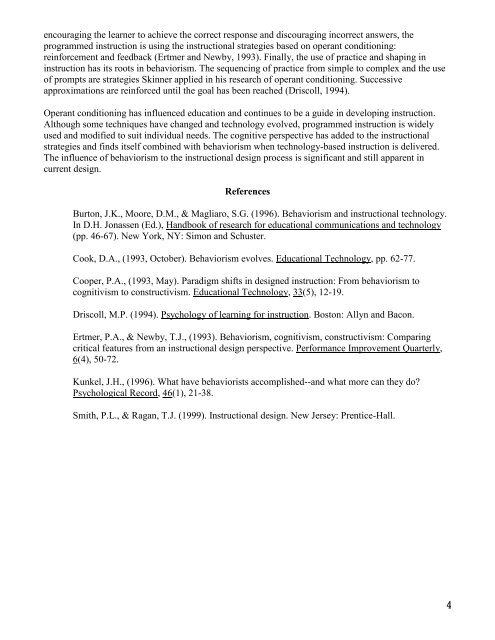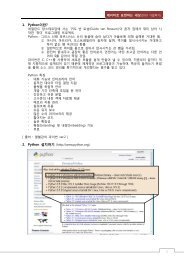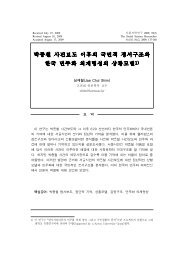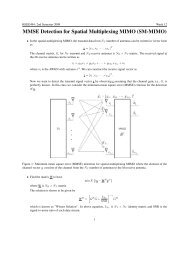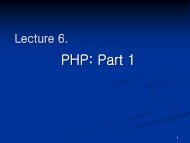Operant Conditioning and its Application to Instructional Design
Operant Conditioning and its Application to Instructional Design
Operant Conditioning and its Application to Instructional Design
You also want an ePaper? Increase the reach of your titles
YUMPU automatically turns print PDFs into web optimized ePapers that Google loves.
encouraging the learner <strong>to</strong> achieve the correct response <strong>and</strong> discouraging incorrect answers, the<br />
programmed instruction is using the instructional strategies based on operant conditioning:<br />
reinforcement <strong>and</strong> feedback (Ertmer <strong>and</strong> Newby, 1993). Finally, the use of practice <strong>and</strong> shaping in<br />
instruction has <strong>its</strong> roots in behaviorism. The sequencing of practice from simple <strong>to</strong> complex <strong>and</strong> the use<br />
of prompts are strategies Skinner applied in his research of operant conditioning. Successive<br />
approximations are reinforced until the goal has been reached (Driscoll, 1994).<br />
<strong>Operant</strong> conditioning has influenced education <strong>and</strong> continues <strong>to</strong> be a guide in developing instruction.<br />
Although some techniques have changed <strong>and</strong> technology evolved, programmed instruction is widely<br />
used <strong>and</strong> modified <strong>to</strong> suit individual needs. The cognitive perspective has added <strong>to</strong> the instructional<br />
strategies <strong>and</strong> finds <strong>its</strong>elf combined with behaviorism when technology-based instruction is delivered.<br />
The influence of behaviorism <strong>to</strong> the instructional design process is significant <strong>and</strong> still apparent in<br />
current design.<br />
References<br />
Bur<strong>to</strong>n, J.K., Moore, D.M., & Magliaro, S.G. (1996). Behaviorism <strong>and</strong> instructional technology.<br />
In D.H. Jonassen (Ed.), H<strong>and</strong>book of research for educational communications <strong>and</strong> technology<br />
(pp. 46-67). New York, NY: Simon <strong>and</strong> Schuster.<br />
Cook, D.A., (1993, Oc<strong>to</strong>ber). Behaviorism evolves. Educational Technology, pp. 62-77.<br />
Cooper, P.A., (1993, May). Paradigm shifts in designed instruction: From behaviorism <strong>to</strong><br />
cognitivism <strong>to</strong> constructivism. Educational Technology, 33(5), 12-19.<br />
Driscoll, M.P. (1994). Psychology of learning for instruction. Bos<strong>to</strong>n: Allyn <strong>and</strong> Bacon.<br />
Ertmer, P.A., & Newby, T.J., (1993). Behaviorism, cognitivism, constructivism: Comparing<br />
critical features from an instructional design perspective. Performance Improvement Quarterly,<br />
6(4), 50-72.<br />
Kunkel, J.H., (1996). What have behaviorists accomplished--<strong>and</strong> what more can they do<br />
Psychological Record, 46(1), 21-38.<br />
Smith, P.L., & Ragan, T.J. (1999). <strong>Instructional</strong> design. New Jersey: Prentice-Hall.<br />
4


